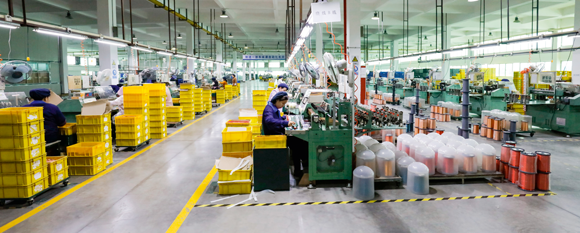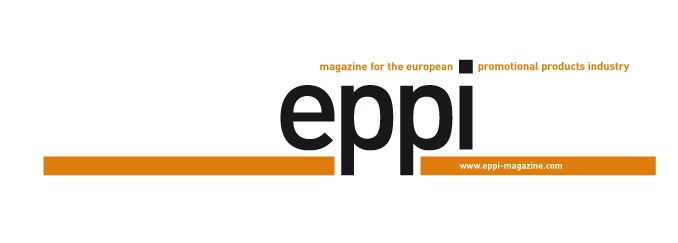CSR, compliance, certificates – it’s all well and good. But who actually monitors all of this? Audits play a major role in safeguarding global supply chains. A glance at the function of the conformity tests and the way the audit specialists, who meanwhile make up a global branch of industry, work.

“Where does my product come from and how was it made?” This is a question both the consumers and professional buyers often ask in today’s globalised world. Whilst some users may ask themselves whether anybody checks all of this, the B2B segment is usually better informed. Procurement departments and traders want to be as familiar with their supply chain as possible and are aware that visits are the order of the day in many of the factories – indeed often so regularly that the day-to-day business is not seldom interrupted by the execution of yet another audit. The test procedures are mandatory for anyone, who operates globally as a procurer, and they are part of the daily business – that applies equally for retail brands as well as for wholesalers and importers. “Audits are very important for us – in our strive to fulfil the EU laws and customer demands as well as with a view to the production conditions in the third countries,” stated Bernd Brunssen, Director of the Quality Assurance Department at Carstensen Import-Export. “In some cases the customers commission audits – socalled second party audits – which are carried out by accredited testing institutes. Sometimes the suppliers themselves are the contracting parties. As importers, we have factory audits – first party audits – as well as pre-shipment inspections conducted by our office team in Shanghai. Some customers in the discount sector additionally demand a quality audit for each production – in this case one talks about third party audits.”
Annika Beyersdorff, who is responsible for quality management, social demands and data protection at the umbrella specialist Fare, confirms: “Audits at our production sites play a key role in our supply chain management. Through our Quality Control Department in China we initially carry out our own ‘Fare audit’ at the premises of potential new manufacturers. During the course of which we clarify the basic framework conditions and find out whether this producer comes into question at all for us. If so, an ‘official’ audit is executed by a recognised testing institute. This applies as a rule for all factories we cooperate with.” Since, generally speaking, a manufacturer produces goods for a number of companies, dozens of visits can come together in a month – and every time very similar points are checked, but in some cases different standards demanded. This is good for the companies, who specialise in conformity assessment processes – auditing hasn’t become a billion-dollar global industry without reason. Whereas a veritable “audit fatigue” prevails among the producers in the meantime.
Create synergies
The introduction of a joint, harmonised testing method and containing the uncountable audits were the motivation behind founding the BSCI (Business Social Compliance Initiative) in the year 2003. Today, the BSCI that is controlled by the organisation amfori (formerly the Foreign Trade Association) has around 2,300 members, more than 60,000 manufacturers are listed in the database of the initiative. “On average five amfori members buy from one non food producer – so it suffices to carry out one audit to cover the demands of five companies, that leads to huge savings,” calculated Lorenz Berzau, Network Representative Germany at amfori.
BSCI audit is conducted according to set guidelines that are oriented on the conventions of the ILO (International Labour Organisation), its significance as the key benchmark for the assessment of production locations remains undisputed. “amfori BSCI, which explicitly considers itself to be an improvement system rather than a certification system also considers audits to be a central issue and as well as serving stocktaking and measurement purposes they also encourage the dialogue,” commented Berzau. “It is our goal to initiate processes that improve the working conditions longterm and permanently. In this connection, audits are one of several tools in the tool box.” “No changes are made during the audit itself. However, if the location follows up on the problems detected, this can lead to considerable improvements and that not only the legal minimum standards are achieved, but indeed exceeded,” explained Bernd Rosing, Managing Director Sales, Key Account Management & Marketing at Bureau Veritas Consumer Products Services Germany. With over 70,000 employees – around 12,000 of whom work in the Consumer Products Services department – and 1,400 offices worldwide, Bureau Veritas is one of the leading global conformity assessment services for the areas quality, health, safety, environmental and social responsibility – and is one of the amfori partner companies that carry out the BSCI audit. Both Carstensen and Fare rely on amfori BSCI, “a leading and widely recognised and accepted standard,” Beyersdorff stated. “All of our production sites are BSCI audited and our BSCI membership is of central importance when it comes down to safeguarding our supply chains and organising the cooperation with our producers.”

Building safety, work protection, lighting, cleanliness and working conditions are all relevant factors when auditing production sites.
The BSCI audits and the resulting processes are initiated via a central IT platform operated by amfori. “All workflows and data are controlled via the platform,” explained Berzau. “The members can add new manufacturers and both members as well as the manufacturers themselves can post and constantly update information. In this way, we can connect all of the players with each other and make the supply chains transparent for our members. Companies that would like to carry out an audit, register it via the platform and we then propose a number of accredited testing companies.” There are currently 13 firms in amfori’s pool of audit companies, including large, globallyaligned suppliers such as Bureau Veritas, TÜV, SGS or Intertek as well as smaller, locally operating companies. “In total, around 900 auditors conduct amfori BSCI audits worldwide,” reported Berzau. “All of them have to fulfil the demands of our Audit Integrity Programme, regularly take part in compulsory training, further training measures and exams. We also carefully examine our audit partners on a regular basis – either ourselves or assign this over to third party service providers.”
Chosen career: Auditor
Anyone, who would like to become an auditor, is spoilt for choice – the fields of activities, to mention just a few, include for instance the finance sector, technology and safety, quality and environmental management, quality control or assurance or alternatively CSR and social themes. There are a host of testing systems within the individual areas, each of which has its own set of rules. The same applies for all sections: One can’t simply become an auditor at the drop of a hat. “Auditors are skilled specialists with good and well-founded qualifications and for many young people in the industrial states of the Far East becoming an auditor is an attractive career goal,” said Berzau.
“Bureau Veritas chooses its social auditors carefully because the job demands extensive expertise and the relevant experience,” explained Rosing. “Typically, auditors have a university background in a technical field or in the area of manufacturing or processing clothes, food, electronic items or other products. Further prerequisites are a good ability to express oneself, outstanding time management and an excellent command of the English language, because a great deal of the teaching materials and seminars are in English and most of the testing reports are drawn up in English. Many auditors also speak one or several local languages. Important soft skills are honesty, sensitivity and good communication skills since auditors have to deal with both top managers as well as all types of employees.” Furthermore, an understanding for cultural peculiarities and correlations that can differ enormously depending on the location is essential. “Cultural factors are extremely relevant – it is a huge difference whether an audit takes place in a Chinese factory, where mostly male migrant workers are employed or in a textile manufacturing company in Bangladesh, where the Moslem religion prevails and 90% of the workers are women,” stated Berzau. “That is why it is so important in the case of many of audits that they are conducted by natives or at least by auditors, who have an excellent knowledge of the place and language.”
There is no classic vocational qualification for auditors, instead there is a large number of companies that offer the corresponding training courses. These entail the respective set of rules and norm systems as well as courses for interview techniques, psychological knowledge and documentation. After completing such training, the candidate spends a certain time as a junior auditor, who accompanies the audits as an assistant. People, who have gained enough practical experience, can become a lead auditor after attending a further training course and passing an exam. Thereafter they are able to carry out audits independently. Rosing: “We train our auditors internally using a global team of trainers. The course comprises of a training course lasting several weeks and on-site training, followed by a period as an ‘Associate Auditor’ and further exams – also of a practical nature. Those who complete the training successfully are allowed to train people and carry out audits themselves. All of the social auditors of Bureau Veritas are registered with the APSCA (Association of Professional Social Compliance Auditors).” (see info box)
If I knew you were comin’…
The contracting party ultimately decides which audit company is assigned with the task and to what extent the business to be tested is informed in advance. “There are three possibilities,” recounted Berzau. “Announced – in this case a fixed date is arranged – semi-announced – a time frame is laid down – or unannounced. We recommend the second option, because it increases the credibility and indeed more and more of our members are opting for semi-announced audits.” Rosing added: “Announced audits are normally implemented for the initial testing, when the location only has a limited amount of experience with audits, which is very seldom the case within established supply chains. In the event of a semi-announced audit – the currently most frequently implemented alternative for retail and brand name manufacturers – problems can be discovered that wouldn’t necessarily become apparent during an announced audit, however it is much more difficult for the tested factory to manage. Unannounced audits are rarer and are only carried out for instance when a serious problem or a violation is assumed.” However, generally it is not about controlling, as Beyersdorff explained: “We don’t want to monitor our manufacturers, but instead engage in an open, trusting dialogue with them. After all, we want to develop our business relations and grow together. That is why we agree on a time frame for the visit in advance.”
Listening, watching, documenting

Interviews with employees are crucial to the auditing process, whereby cultural factors have to be taken into account.
The actual audit lasts on average one to two days and is nearly always a mixture between a site tour, viewing documents and interviews with the executives and employees. The latter are an elementary fixed component, which is recognisable from the name, since “audit” comes from the Latin word “audire”, which means “listening”. “Initially, a discussion is usually held with the management of the factory, followed by a tour which focuses on themes such as building safety, work protection, cleanliness and working conditions,” commented Rosing. “Furthermore employee documents such as contracts, time sheets and payrolls are checked as well as the respective location processes and recordings.” “Discussions with the employees, which mostly take place in groups of between eight to ten people in order to create a relaxed atmosphere, are very important, after all the aim is that the discussion partners provide information and aren’t shy,” explained Berzau. “Our standardized catalogue of questions is completed by the respective local legislations – for example the regular working hours in China are 40 hours a week maximum, this is higher in other countries.” The results compiled are finally weighed up and assessed. Rosing declared, “The triangulation is important, i.e. searching for objective evidence from different sources, which allows fair and clear improvement solutions to be defined.”
After giving the manufacturers a brief feedback, the audit report follows shortly afterwards. In today’s digitalisation era, IT tools and data analysis are implemented for the documentation, division and evaluation: “A typical social audit can encompass hundreds of data points,” noted Rosing. “Bureau Veritas’ OneSource IT platform assists with the assessment. Our customers are given a clear overview of in which areas action is required to be taken and what should be discussed with the various stakeholders.” amfori also inputs the cognitions gained from the audit into its IT platform, as Berzau explained: “The audit report including an assessment of the producer and of the employees that work together or are associated with him can be viewed there. This enables transparency and increases the motivation for the producer to make changes. The manufacturer then has the task of drawing up a remediation plan and making proposals for concrete changes.”
That is what normally happens – unfortunately there are factory managers that apply unfair measures. “Sometimes a factory decides that it is easier to avoid transparency than to comply with the local laws and relevant codes of practice,” stated Rosing. “So we have developed measures that demand honesty as well as methods that allow attempts at fraud to be identified.”
“Corruption takes place too,” added Berzau, “it is difficult to say how often, because we only know, when the auditor reports it. Should this happen, we follow a zero tolerance policy: The case has to be documented within 72 hours, and a telephone conference takes place between the amfori secretariat and the affected members. They then have to decide which measures are initiated. Breaking off the business relations is the ultima ratio here, but it sets a signal.” The relationship between the auditor to the contracting partner and to the company to be tested is subject to monitoring mechanisms, as Beyersdorff reported: “Neither we, nor the company to be audited have an influence on which auditor is assigned with the task,” explained Beyersdorff. “Furthermore, it is avoided that an auditor is implemented for different audits within the same factory, so that no relationships arise that could influence the result.” Moreover, the auditor’s work on a project ends with the final report – those who carry out the audit are not allowed to simultaneously coach and advise, other employees take on these tasks.
After the audit
Whereby this is when the work really starts for them – and for the manufacturers and the contracting party. “An audit report alone is no guarantee that a production site complies with all of the demanded guidelines,” said Beyersdorff. “For companies, who are serious about the subject, an audit alone doesn’t suffice, they develop a plan together with the production site which outlines how critical points can be optimised. This process has to be further pursued and followed up.” This optimisation process usually includes a financing plan: “The costs for a BSCI audit, which as a rule takes place once a year, are normally carried out by the company undergoing the audit,” stated Berzau. “The audit costs are like a drop in the ocean compared to what the producer has to invest in possible optimisation measures – for instance if a new sprinkler system has to be installed. However, such expenditures are investments in the company. The workflows become more efficient, the productivity is increased and the working conditions improved. It is especially effective if several amfori members collaborate in such processes – also in financial terms. Here, the sustainability aspect should outweigh the competition.” As Beyersdorff reported the willingness to improve is fortunately high among many of the manufacturers. “One has to realise that there is a lack of skilled workers in China too, because in the meantime there are a host of job opportunities in the traditional production regions that are more attractive than working in a factory. So, if a manufacturer doesn’t achieve a certain level of quality, he can’t get the workers.”

After the audit, the work really starts: Ideally, the manufacturer and the contracting party work together to optimize critical points.
The limits of audit systems
Of course, this doesn’t apply for all production regions and anyway audits and the processes they subsequently trigger offer never replace the necessity to gain a personal impression of one’s supplier sites. “One can hardly credibly prove whether a works council is effective or whether discriminating practices can be ruled out in a two-day visit,” commented Berzau. “Incidentally, this doesn’t just apply for the Far East: It is a cliché that everything is ‘in order’ in Europe – there are enough examples that prove the opposite. Of course, this faces importers with big challenges, but at the same time the better they know their supply chain the less stress they have.” However, for the time being the familiar part of the supply chain ends with the direct intermediate supplier – which is hardly surprising for an industry like haptic advertising, where thousands of different in some cases highly-complex technical products are dealt with. Beyersdorff: “All of the factories we work directly together with have passed a BSCI audit – hardly anyone else in the promotional products business can boast a share like that. Our umbrellas are partly made up of more than 100 individual parts and our production partners work together with very many sub-suppliers. We demand the corresponding declarations from the factories we test that their suppliers are in line with the standards we demand, but it’s a big challenge to guarantee conformity along the whole supply chain. However, we’re happy to take on this challenge.”
“We are initially only responsible for the direct supplier or manufacturer,” confirmed Brunssen. “These are requested to provide proof of the quality assurance and observance of the minimum social standards at their sub-suppliers.” A further compromise is to name certain suppliers of raw materials and have them checked, as Rosing stated: “For example a supplier of zips or buttons could be tested and the clothes factory asked to implement goods from this subsupplier. In the scope of such audits, we check among others bottling plants, farms, call centres, cutting shops for apparel factories, mobile phone refurbishment or distribution centres.” The BSCI also promotes initiatives that delve deeper down into the supply chain. “Even simple products have a number of sub-suppliers and here sometimes the risks are higher than in the final production phase,” said Berzau. “The amfori BSCI audit demands that a producer reveals his suppliers, but those who want to be totally sure, have to carry out audits and coachings there too. We offer this service to our members of course too, but it is a huge challenge.” Hence, there is still plenty to do – both for the importers as well as for the manufacturers, who keep on receiving visit after visit.
// Till Barth
Founded in 1828, Bureau Veritas is a global leader in conformity assessment services in the areas of quality, health and safety, environment and social responsibility, employing approx. 69,000 people with 1,400 offices and laboratories in 140 countries, with an overall global turnover of 4.55 bil. Euros in 2016. The Consumer Products Services Division of Bureau Veritas (Bureau Veritas CPS) boasts more than 12,000 employees to provide comprehensive inspection, assessment and testing services to the retailers, manufacturers, brands, distributors and importers of consumer products.
Founded in Brussels 1977 as Foreign Trade Association (FTA) and renamed amfori in 2018, the global business association for open and sustainable trade brings together over 2,000 retailers, importers, brands and associations from more than 40 countries, including organisations of all sizes and all sectors with a combined turnover of more than one trillion Euros. In 2003, the FTA created the Business Social Compliance Initiative (BSCI) to provide companies with a practical and efficient system to improve social compliance within their global supply chains. The amfori BSCI platform provides a single point for all supply chain performance information. By sharing the results of the monitoring activities, the members reduce effort, save money and increase consistency for buyers and suppliers. BSCI’s Auditing Integrity Programme aims to maintain transparency and reliability in the monitoring process. It provides a comprehensive, robust and independent acceptance process for audit companies to engage with amfori BSCI activities and ensures excellence in audit quality. In 2014, the organisation developed the Business Environmental Performance Initiative (BEPI) to support companies committed to improving environmental performance in their supply chain.
The Association of Professional Social Compliance Auditors (APSCA) was founded by leading social compliance audit firms including Arche Advisors, Bureau Veritas, Elevate, Intertek, SGS, RINA, TUV Rheinland, TUV Sud and UL. As a practitioner-led initiative, the industry association aims to support individuals and organizations by promoting the use of independent social compliance audits and to enhance the professionalism, consistency and credibility of individual auditors and audit organisations.
photos: Shutterstock: humphery (1), kan_chana (1), Kzenon (1)



